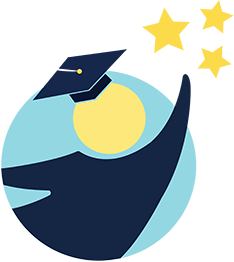
General Information
Excelling at a sport can be an advantage in getting into a good school. The support of a college coach can make a meaningful difference. The key is to be identified by a coach as a prospect that he or she will put forward to the admission office. This process frequently results in a student athlete being accepted at a college that might otherwise have been out of reach.
Even at the most highly resourced colleges (like the Ivy League and NESCAC schools) the coaches recruit from all over the world. They are searching for top athletes who meet the academic standards of the school. Each of them identifies as many as over a hundred possible candidates and then narrows their list based on the skills needed, the likelihood of an athlete qualifying for acceptance and being interested in attending the college in question.
Student athletes can maximize their chances of benefiting from these opportunities by contacting coaches at colleges that are realistic for them and providing a comprehensive package of information on their athletic and academic accomplishments.

First Steps
Education is for a lifetime; sports careers have a shorter shelf life. Student-athletes should resist the temptation to choose a school based on athletics alone; unwelcome as they may be, injuries and coaching changes are common events that may utterly change a team dynamic. The highest priority for the student-athlete, starting in the freshman and sophomore years, is to identify several colleges that will meet her or his educational goals, with emphasis on academic standards, areas of study, school size, location, campus life and overall fit. Other factors to be considered include the range of SAT scores for accepted students, acceptance rates and the possibility of athletic scholarships and need-based financial aid.
Contacts with Coaches
In recent years, the recruiting timeline has shifted earlier than ever before. Athletes should not wait to be “discovered” (at showcases or by recommendations from school or club coaches). Contact can be made with college coaches starting in the freshman and sophomore year, by completing a coach’s recruiting questionnaire on the college website and a letter or email to the coach expressing an interest in his or her college and team. This is a great way to start looking at and thinking about schools, gets you in a coach’s database for possible camps, clinics, and opportunities to be seen, and does not commit a student-athlete in any way. Coaches appreciate effort beyond a general email—taking the time to do a little research on a school and a program to indicate a specific interest will go further toward getting noticed! Well-edited YouTube videos can be helpful. Don’t assume that college coaches go to relevant sports data websites.
Further communication (whether written, in-person, electronic or by phone) is closely regulated by the NCAA and is generally more limited for Divisions I and II and more open for Division III. These rules may seem overly strict, but they exist to protect the student-athlete and to keep the recruiting process fair and transparent. It is worth investigating recruiting calendars and guidelines, which are sport- and division-specific, to learn exactly how and when coaches may be able to return a phone call, speak to you if you visit campus, etc.
An excellent resource for students and families navigating this exciting, but complex process is the NCAA’s Guide for the College-Bound Student-Athlete. An athlete complying with these rules will develop a sense of which coaches have an interest in her or him.

NCAA Eligibility
To be recruited at a Division I or Division II college, a student’s academic and amateur status must be cleared and declared eligible by the NCAA (www.eligibilitycenter.org).
College Visits
The NCAA has a concept of “official” visits to Division I, II or III colleges. They are offered by the college coach, paid for by the college, and can occur as early as August 1 of a student-athlete’s junior year, depending on the sport and Division. A maximum of five official visits are allowed at Division I schools and there is no limit on visits to Division II and Division III schools. Student-athletes can make unlimited college visits that are paid for by their family at colleges in Divisions I, II and III.
On any college visit, it is important to meet with the coach and, with her or his help, an admission officer when recruiting rules allow. The coach should be given any information not previously provided, including athletic accomplishments, standardized test scores and grades. It is valuable to meet members of the team.
